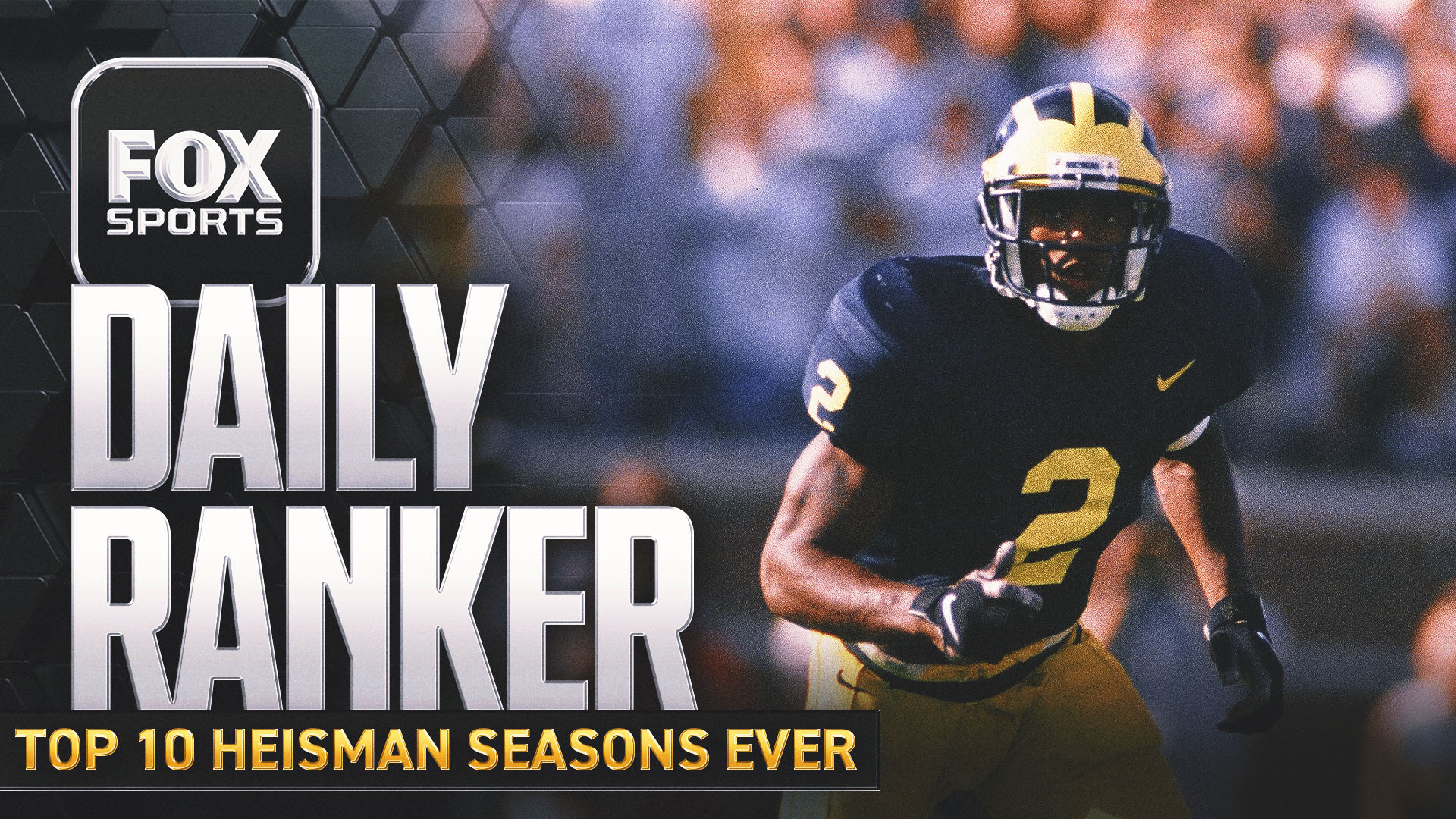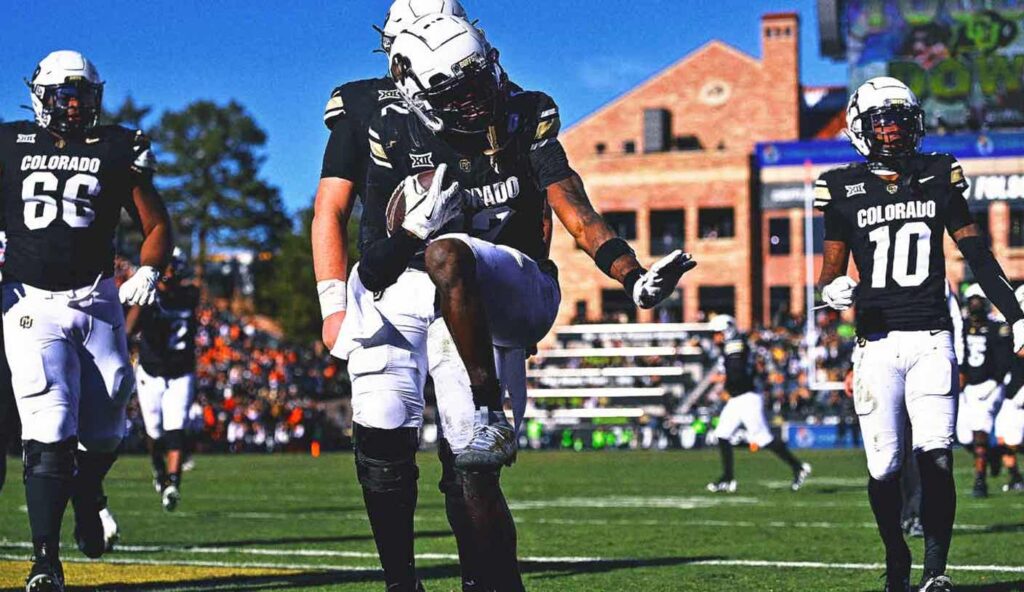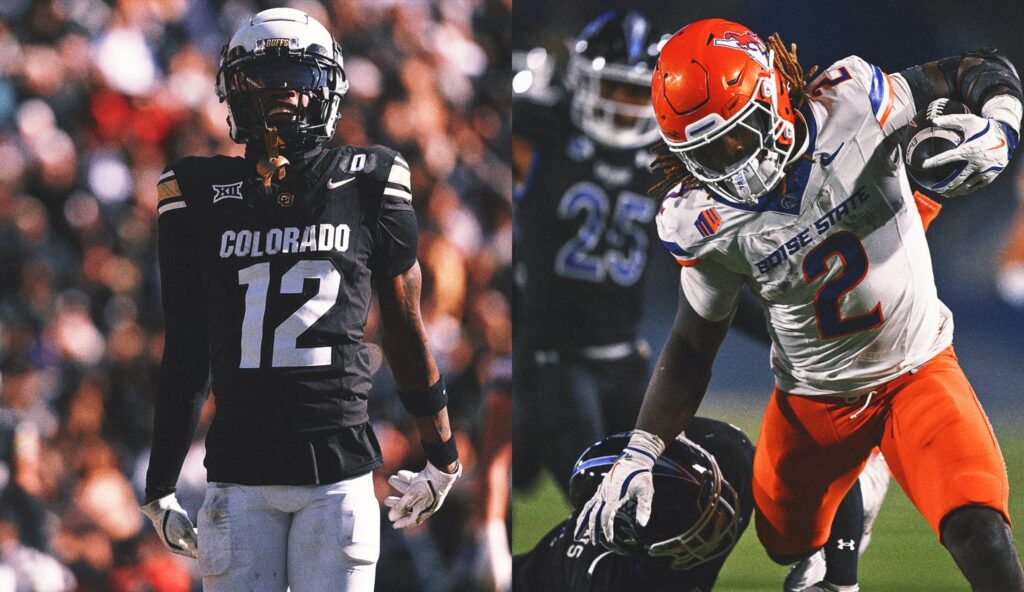
Obviously it takes a special season to win the Heisman. However, it takes an even more incredible year to be considered among the best of the best in the award’s nearly 100-year history.
Many Heisman winners have accomplished uncommon feats and set records in the year they took home the honor. For example, in 2024, a two-way player who played virtually every play for his team from scrimmage won the award in one of the most memorable runs in Heisman history.
Was Travis Hunter’s win among the best in Heisman history? Here are the 10 best Heisman seasons of all time, courtesy of FOX Sports Research.
Louisville has been far from a Heisman factory over its 100-plus football seasons. Jackson’s win was not only the first in program history, but it marked the first time since at least 1982 that Louisville had a Heisman finalist. Jackson’s play was good enough to put the Cardinals on the college football map that season. He threw for 3,390 yards, 30 touchdowns and nine interceptions, along with 1,538 rushing yards and 21 rushing touchdowns in 12 regular-season games. He had an eight-touchdown performance against Charlotte that year along with two seven-touchdown games.
But his most impressive performance came when he scored three total touchdowns against Clemson, nearly defeating that season’s national champion on the road. When you add all those things up, it’s no surprise that Jackson had a -4000 chance of winning the Heisman days before the ceremony.
9. Florida quarterback Tim Tebow (2007)
Tebow’s first season as a Heisman starter was unforgettable. After playing a small role as a backup for the Gators in their title-winning season a year earlier, Tebow instantly became one of the best quarterbacks in the game. He threw for 3,132 yards, 29 touchdowns and six interceptions, along with 838 rushing yards and 22 rushing touchdowns during the regular season. The rushing touchdown mark was the most in a single season in SEC history, while Tebow’s 9.4 yards per attempt led the FBS that year. After a four-touchdown performance in the Florida bowl game, Tebow finished the year with 55 total touchdowns, also setting an SEC record.
Tebow’s performance was not enough to get Florida back into the title game: the Gators finished 9-3 during the regular season. But it was enough to become the first sophomore to win the Heisman.
Long before he became one of the greatest running backs in NFL history, Allen was dominating the college game. His 1981 season remains one of the best ever for a running back. He rushed for 2,342 yards and 22 touchdowns that season, not including the USC bowl game. If you add Allen’s rushing total in USC’s bowl victory, his 2,427 rushing yards in 12 games would be the fifth-most in a season. He rushed for more than 200 yards in USC’s victories over No. 2 Oklahoma and UCLA that season, marking two of the eight times he rushed for more than 200 yards in a game that season.
7. Texas A&M quarterback Johnny Manziel (2012)
A year after Texas A&M went 7-6, the Aggies went 11-2 in their first season in the SEC and were title contenders. Manziel’s insertion was a big reason for that, as he posted one of the most electrifying seasons ever for a quarterback. He threw for 3,419 yards, 24 touchdowns and nine interceptions, along with 1,181 rushing yards and 19 rushing touchdowns in 12 regular-season games.
Manziel’s Heisman moment came late in the year, when he led Texas A&M to a 29-24 upset victory over No. 1 Alabama in Tuscaloosa. He threw for 253 yards and two touchdowns, plus 93 rushing yards against the team that won its second straight title. After Manziel’s bowl performance, he led the SEC in rushing yards (1,410) and rushing touchdowns (21). That helped cement “Johnny Football’s” legendary season, as he became the first (redshirt) freshman to win the Heisman.
6. Pittsburgh running back Tony Dorsett (1976)
After finishing fourth in Heisman voting in 1975, Dorsett made sure to take home college football’s top individual honor in 1976. He rushed for 1,948 yards and a national-best 21 touchdowns in 11 regular-season games, which also helped him set the absolute record. -Time stamp for most rushing yards in NCAA history at that time. But his best performance that year isn’t included in that official stat line: He rushed for 202 yards and a touchdown in Pittsburgh’s Sugar Bowl victory over Georgia. That victory helped Pittsburgh win the national title, ending one of the greatest careers in college football.
5. Michigan DB/WR Charles Woodson (1997)
Woodson had one of the most impressive seasons in college football history in 1997, helping Michigan win the title that year. The senior defensive back recorded seven interceptions, often blocking the opposing team’s best receiver. Offensively, he had 231 receiving yards and three touchdowns.
However, Woodson’s most memorable play that season was as a returner. Six years after Desmond Howard had a punt return touchdown against Ohio State to cap his Heisman season, Woodson scored a 77-yard punt return touchdown against archrival Michigan. He failed to strike a Heisman pose as his teammates quickly tackled him. But Woodson took home the Heisman weeks later, defeating Peyton Manning in one of the closest votes in the award’s history.
4. Auburn quarterback Cam Newton (2010)
It can be argued that no one did more to help his team win a national title than Newton in the 2010 season. After transferring from Florida, Newton quickly turned Auburn from a middle-of-the-pack SEC team to a contender at the top. championship. As Auburn won 11 games to open the season, it looked like it would lose to Alabama in its regular season finale. Newton, however, scored four total touchdowns to help Auburn rally from a 24-0 deficit. Newton’s 408 total yards and six total touchdowns in the SEC Championship Game against South Carolina led to a more decisive victory. He won the Heisman after that game and threw for two touchdowns in Alabama’s victory over Oregon in the title game, capping the year with 2,854 passing yards, 30 passing touchdowns, seven interceptions, 1,473 rushing yards and 20 rushing touchdowns.
3. Colorado WR/DB Travis Hunter (2024)
In an era where quarterbacks on CFP teams often win the award, it must take someone other than a quarterback to do something historic. Then consider beating someone who ran for the second-most yards in a season in college football history.
Hunter was able to do something incredibly unique to secure the Heisman last December. The two-way star played the vast majority of Colorado’s snaps from scrimmage in 2024, logging 1,360 snaps before Colorado’s bowl game. Not only was Hunter durable, but he also produced elite production on both sides of the ball. He had 94 receptions for 1,258 yards and 15 touchdowns plus a rushing score over the course of the season, including the Colorado bowl game. Defensively, Hunter had 35 total tackles, 11 passes defended, four interceptions and a forced fumble. While those stats may not be surprising, quarterbacks didn’t throw much to Hunter. He allowed 22 receptions on 40 targets for just 212 yards and one touchdown, according to Pro Football Focus.
Like Manziel, Burrow seemingly came out of nowhere to win the Heisman in 2019. But Burrow’s season was statistically one of the best for a quarterback. Burrow punished LSU opponents through the air all season long, as he tallied 4,715 yards, 48 touchdowns and six interceptions, along with 289 rushing yards and three rushing touchdowns in the 13 games leading up to the Heisman voting.
After winning the Heisman in the most decisive vote in the award’s history, Burrow had arguably his two best performances of the season. He threw for 12 touchdowns and ran for two more in LSU’s semifinal and championship victories. Those performances gave Burrow 5,671 passing yards, 60 touchdown passes and 65 total touchdowns, setting NCAA records in the latter two statistics.
Before becoming arguably the greatest running back in NFL history, Sanders had the greatest season ever for a Heisman winner. He rushed for 2,628 yards and 37 touchdowns in his final season in Stillwater, which remain NCAA records. He also did so with an average of 7.6 yards per carry.
Even more impressive about Sanders’ 1988 season is that he achieved those numbers in just 11 games. At the time, the NCAA did not count bowl game statistics in its official records. Sanders rushed for 222 yards and five touchdowns in Oklahoma State’s victory that year, giving him 2,850 yards and 42 touchdowns on the season.
HONORABLE MENTION
USC RB DO Simpson (1968)
Georgia RB Herschel Walker (1982)
Nebraska running back Mike Rozier (1983)
Boston University quarterback Doug Flutie (1984)
Michigan WR Desmond Howard (1991)
Florida quarterback Danny Wuerffel (1996)
Texas running back Ricky Williams (1998)
Reggie Bush, USC running back (2005)
Baylor quarterback Robert Griffin III (2011)
Kyler Murray, Oklahoma quarterback (2018)
Want great stories delivered straight to your inbox? Create or log in to your FOX Sports account, follow leagues, teams and players to receive a personalized newsletter daily.
Get more from college football Follow your favorites to get information about games, news and more.

 Workout
Workout
 Meditation
Meditation




 Contact Us
Contact Us










